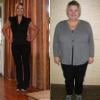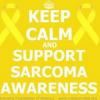Search the Community
Showing results for 'Yogurt'.
Found 17,501 results
-


Doctor is at a Loss to Explain
onikenbai replied to onikenbai's topic in Gastric Sleeve Surgery Forums
I can't put a thing in my mouth without a plan of where I'm going to throw up. People keep harassing me over having cups in my car and about how sloppy I am not to throw them out. Um, they're there for a reason. You never know when you have to hurl while driving. Sometimes that glass of Water didn't go down as well you thought it did at first. Yes, the band seems to be incredibly fickle. The other day I ate this HUGE bowl of meatballs... I was soooo hungry. It went down fine like the band wasn't in place. The next day I threw up a tablespoon of yogurt and couldn't put solid food in my mouth all day. -
I'm a little confused by what to eat when I start pured food on Day 8. My instructions from my Dr. are very short. Just says: Foods that are ok & don't need to be pured - yogurt, oat meal, cottage cheese, baby food, hummus, refried Beans. It tells me to keep drinking 48-64 oz of fluids and my goals are 800-1200 calories and 75 or more grams of Protein. Does that mean you can eat other things too, as long as you blended/pured and tolerate them? Or just stick to the above list. There are so many people doing different things. What has worked for others at this stage? Thanks in advance! Sent from my LG-H631 using the BariatricPal App
-


What a difference a year makes... (Pictures - size 20 to size 4!)
sarahcc posted a topic in Weight Loss Surgery Success Stories
I'm about 2 weeks late for my surgiversary post, but I'll make it up to everyone by being short and sweet!! Started: 25 years old 5' 1" tall 241 pounds Size 20 pants Size XXL tops 40DD bra size Size 8 shoe Currently: 26 years old 5' 1" tall 125 pounds Size 4 pants Size Small tops 34C bra size Size 6.5 shoe Key surgery/post-op points: I had no pre-op or post-op fasting or liquid diet. I started on pureed Protein such as eggs and tuna while I was still in the hospital on day 2 post-op. I ate regular meals up until 24 hours before surgery. This was at my surgeon's discretion. I've never counted calories, carbs, fat or any of that stuff. I eat and drink as I feel comfortable doing so. If I had to guess, I would say I take in about 900-1200 calories a day on average. There is no food I can't eat or drink, but I don't eat many rice/pasta/bread products because I tend to feel uncomfortable afterward. I do take bites here and there and I do eat dry carbs such as chips. I also eat potatoes. I love dairy such as cheese and yogurt. I love fruits and vegetables of all kinds. I love fish and seafood as they settle easiest in my stomach. But I also eat steak, hamburger, chicken, etc... and I love it I eat all day long. Tiny amounts, but constantly. I still enjoy half a cheeseburger or handful of french fries from time to time. I have cut NOTHING completely out of my life food wise. I did not go through all this to be on a lifelong diet. I change my lifestyle and my eating habits, but not a diet. Now that I'm thin, I have so much more energy to run around and exercise. I have a gym membership and I use it primarily for cardio, but this summer I'm going to focus on strength training to rebuild my muscle that was lost in the rapid weight loss. I want to be strong I do have loose skin, but it's getting better. My stomach is pretty flat, and my arms are tightening up. I have a little sag in my butt and a small pouch of skin/fat left in my pelvic area, but I'm comfortable with it at this point. I would never consider having surgery. I think with toning and time it will firm on it's own (I've also had two kids, for what it's worth) I was the healthiest fat person I know. That's something important to take into consideration when looking at my results. I had no other underlying issues that would prevent the weight from just melting off, which it did. I've been within 5 pounds of my current weight since 10 months post op. Nowadays I'm just trying to get my shape back and build my strength and tone back up. Pictures: If I can do it - anyone can Hope this motivates someone who was in the same place I was in a year ago - scared and overwhelmed. It's all gonna be ok :) (by the way, that's the same grey sweatshirt in the before pic and the one where I have the hood on) -
The strawberry is my favorite. It's the only Greek yogurt I like.
-


How is maintenance going for you?
Oregondaisy replied to Oregondaisy's topic in Gastric Sleeve Surgery Forums
You just have to make up your mind to eat Protein first and some veggies and if you snack between meals, it's with protein. nuts are okay, and I will sometimes have a cheese stick with a few Fiber one crackers . They aren't very bad as far as carbs go and I only need about 3 with a cheese stick. I allow myself one snack in the evening like a sf pudding or a ww fudgesicle. Lately I have really been enjoying plain greek yogurt with coconut sf syrup mixed in. pretty yummy! -
Barb said something today that made me realize I need to journal activity and food. If we don't, how will we know what tirggers problems? AM Coffee with coffeemate and l/2T raw sugar 35 Slimfast 190 Yogurt Activia Blueberry 90 Tea with peach flavor 0:biggrin1: Bite of mango 5
-


Who was banded on the 13th and what are you eating?
servaline replied to marieze's topic in LAP-BAND Surgery Forums
I was banded on 2/13. I have 3wk of full liquids. It hasn't been bad. I just blent any Progessro Soup up and voila! I add pepper, spices, etc. I even use 1 can of tomatoes w/ some chili Beans and chili powder~that is good too. I have non-fat yogurt, non-fat sour cream that I use to spice things up too. In the morning I have oatmeal, Protein powder, sweet n low, and vanilla, blended for Breakfast. I add Protein Powder to 3 meals. Glad to join this group :thumbdown: -


I need to lose 9lbs before my surgery HELP!
Beni replied to tinagatorfan79's topic in PRE-Operation Weight Loss Surgery Q&A
I lost 7 pounds in 2 1/2 weeks with a bariatric diet. I am practicing to eat just as if I had Bypass already but with bigger portions. 3 meals a day without meal skipping. Breakfast within 2 hours after you wake up:, lean protein (chicken, pork, beef, fish, eggs, seafood, cheese, etc) veggies and the tiniest amount of carbs. I allow myself a table spoon of rice, potatoes, bread, etc. No sugar either No liquids 15 minutes before meals, no liquids 30 minutes after meals Each meal has to be chewed without drinking for 20 to 25 minutes. This is super slow. I put a show on or I go stir crazy Drink 64 oz of water the rest of the day, and yes, that's a lot of water. I also allow a snack mid afternoon, again low carb and no sugar. Yogurt is my fave and a piece of fruit. I also like a quest bar and a piece of fruit. I was actually losing weight so fast I had to add more food and I did end up making the portions bigger. I noticed if I had anything carb or sugar I did feel more hungry. Stay away from them, they are evil. Best part, I am never hungry. -


June 2018 losers bench
Fletcher Lives replied to Fletcher Lives's topic in Gastric Bypass Surgery Forums
Hello, I am eating jello and yogurt so far. My throat is still sore from the incurbation so swallowing is a challenge but it is getting better. I have my 1st week follow-up tues. also I’m not hungry. what are eating? -
I found the same thing when I was out on teaching rounds this year - not qualified yet. But eating in the staff room in front of other people I dont know and being under pressure to eat fast and get out and do yard duty some days, eeek. I stuck with Soup or yogurt! I didnt even attempt to eat what I would anywhere else. Also, I'd gone all morning without eating since Breakfast and for some unknown reason that makes me tighter. This year when I go out on rounds I will be sure to take a mid morning snack as well.
-


Sharing some progress :)
khalid151 replied to khalid151's topic in Weight Loss Surgery Success Stories
Great job on the progress. Can I ask what you did during to the two months in terms of food and exercise? Sent from my SM-G928T using the BariatricPal App Hey sure of course I'll tell you! For me it's started with sugar free apple juice, chicken stock and Water for my first phase. I try during that time to walk as much as I could. Next phase I added puree'd chicken to the chicken stock and added skimmed yogurt. During the whole time I had cut out all sugars and all sources of carbs. My fav go to Protein is grilled fillet of fish or salmon. My source of carbs come from veggies like broccoli. Basically I keep my calorie intake up to 700 calories a day. I also try to hit 60 to 70 grams of protein a day plus as much water as I can. For my exercise, I walk about 10,000 footsteps a day. Not everyday but most days. I also hit the gym 3 to 4 times a week where I do 30 min of cross trainer or the elliptical machine, circuit training. Then I hit the free weights plus the weights machines. That's what I can think of right now. Let me know if you have any questions, I will be glad to help Sent from my Pixel XL using the BariatricPal App -


Please Help...i Dont Know How To Adapt...!!!:-/
Ladybug28 replied to beverlaay7's topic in POST-Operation Weight Loss Surgery Q&A
I'm surprised your doctor didn't tell you about the Protein. You want to be sure to get that, for one thing you don't want your hair falling out, but it really helps with the hunger. I drink a lot of Atkins ready to drink, and I also have Body Fortress powder from Walmart to mix my own. The broth I drank was from unjury.com, mixes well and tastes yummy and 20gram of protein per cup! Right now you're in the healing stage so don't worry or focus too much on the weight loss. My doctor also allowed greek yogurt, runny cream of wheat, and surgar free pudding. Remember work to get a minmum of 60 gram and aim for 100 gr of protein a day. Everyone is so different but I found that where I use to go daily I now only go every other day. There's just not enough food going through our system like before. Your system will adjust before long, Enjoy not being constipated! lol. If I haven't gone by the end of the second day I take a teaspon of MOM. Hang in there....enjoy the journey and good luck to you! Deb -
Happy New Year everyone!! I am looking forward to a much better new year than last year was and hope that we will get somewhere better with this Covid. I have a issue I am dealing with at night. I am not a good sleeper and haven't been for a few years, but since the surgery, I have been hungry through the night and it seems like I need to eat every 2-3 hours. I really don't like doing this. Does anyone else have this problem and, if so, how do you handle it? I try to eat yogurt, cottage cheese, and things like that, but those things can get boring and I also use them during the day. I did get some protein soups from BariatricPal store and can tolerate it, but you can sure taste the protein powder in the soups.....something that I'm not crazy about. Maybe one of you can help me out with this....
-
I love Greek yogurt, also I buy the tuna packets that are only 2.5oz perfect for me. I but the target brand white albacore and it is like 75 cents cheaper for each packet. What kind of food do you like? I am a Mexican food junky, which is great because I can make a ton of quick, easy, small meals for myself that are super high in protein, low in carbs and so yummy. If you like Mexican food let me know and I will give you some super yummy recipes. Good luck
-
I'm glad I read this thread. Thanks to PMS I've had way too much restriction the last couple of days, and even liquid yogurt was getting stuck in my band. I've been happy with my recent weight loss and feeling of fullness, but this reflux has got to stop. If I still feel like this after my monthly buddy passes through town, I'll get a slight unfill.
-
depended on the type of food. Cottage cheese, yogurt, and refried beans were probably about 1/2 cup servings. Once I could eat veggies, those were probably about 1/4 cup, and fish was also 1/4 cup,
-
I did make sure to get all my protein in, and I ate NO junk, no processed food. I tried to make every single bite as nutritionally dense as possible. I made soups, green berry smoothies, ate a lot of yogurt and cottage cheese, home grown pumpkin and garden veggies, some fish, a little fruit (like 1/2 apple or a mandarin orange.) I was also using lentils and other legumes, as well as still using some protein powder. No grain based carbs, no nut butters, very limited fruit. I reached goal very quickly and have maintained now for a year. I am now plant based and do not even try to count calories any more. I still get about 60 gm of protein a day, but I eat whatever I want now and as much as I want. I am never hungry. Mind you, I get in about 10 servings of fruits/veggies a day, eat a moderate amount of whole grains, plenty of legumes, nuts and seeds, but no sugar, simple carbs, processed or junk food, No soda, no alcohol, no caffeine. Never felt better, have tons of energy, no pain, no sleep apnea. Blood pressure is normal now, and my fatty liver is now normal. Cholesterol plummeted to 152, as did my LDL and triglycerides. Losing over 100 pounds made a world of difference - a whole new life. But going whole food plant based (WFPB) took it to a whole new level of health and wellness. My other fat life seems like a distant dream now - and I'm never going back there! Bottom line - success at lifelong weight loss means making lifelong changes in food choices, habits, exercise patterns, and lifestyle. We must let go of the things that made us fat in the first place, and embrace the new things that will bring us success for the long term. It can be a scary journey, but worth every step!
-


Dont know if I should go back n remove fluid
ThinSIstaSoon replied to rhya2k's topic in LAP-BAND Surgery Forums
I'm in the same boat now. Reflux and pbing when I eat solids. I got a fill Monday and am doing liquids now since they go down fine. Soup, oatmeal, yogurt, and protein shakes for this chic. I have 8.5 ccs in my 11 cc band and am losing my insurance at the end of the month. My Surgeon was aggressive with this fill and boy can I tell! Gonna allow a few days for swelling to go down and reassess. I literally can't afford another fill so I may have to live tight until I lose enough weight that things loosen up on their own. -


4 days post-op temp is 100.4 please set my mind at ease!!!!!!
MINI-Me replied to Alish's topic in POST-Operation Weight Loss Surgery Q&A
I've read that Dr. Aceves has you on a liquid diet for a lot longer than some of us. Is Beef broth or pureed Soup allowed? If so, that will allow you to get in some Protein. Another option is yogurt (if allowed). If you live near a Kroger or Fred Meyer (anywhere that sells Kroger products), they have CarbMaster Yogurt which has 12grams per container. It may take you a while to eat 6 ounces, but I bet that 12 grams will help you feel much better. Skim or lowfat milk is also a good protein source. I wouldn't worry too much about the 60+ grams of protein at this early stage, but you do need to get some. Anyone else have any ideas for liquid phase protein? -
Hello! I am new to the forum. I had my surgery on Wed 9/12/12. It went well - only took about 40 minutes! My starting weight was 265 lbs, surgery day it was 253, and yesterday it was 251. Up until today I haven't felt too great. I suppose that is to be expected, but I was hopeful that I would be one who would sail right through it. I have 5 incisions but only one, the "big" one hurts. Its better today, but getting up from laying down is still very hard. I've been kind of woozy, but that seems to be easing up a bit. And my stomach gurgles all the time!! I think that is driving me the craziest! I am taking prevacid so hopefully that will get it under control soon. TUMS seem to help as well. Today I'm up and around a lot more which is good. I am finding it hard to get the protein, water and calories in right now though! I am averaging 2 protein shakes a day, maybe 24 oz of water or other liquid, and 1/4-1/2 cup of strained soup or yogurt, applesauce. I'll be so happy when I can something like cottage cheese! Any suggestions for the gurgles?
- 16 replies
-
- stomach gurgling
- stomach acid
-
(and 1 more)
Tagged with:
-


Nov. 22nd Bandsters, how are you doing?
Xkitana replied to gotmyeyeontheprize's topic in POST-Operation Weight Loss Surgery Q&A
Hello Hello :-) I was banded Nov 21st and feel amazing at the moment :-) Took the week off from work and got back this past Monday and it was starting yesterday I start food has been good, but since i can't stomach pureed meats, aside from tuna, I've been reduced to Protein shakes, cottage cheese, yogurt, silken tofu, pudding and Jello...but stillupbeat about the prospect of being healthier :-) Weighed myself on my home digital scale and am down 12 lbs. already, although can't see really tell since I'm still swollen from the surgery :-) Hope all of November banders are recovering well!!! -


Help!!is My Timeline Normal? Banded 7/15/11
Holly Dolly replied to michelle135's topic in LAP-BAND Surgery Forums
I've been battling the head hunger too ate night lately, so much more than my first year out from surgery. And like Dulci I have been having a cup of tea to try and forget about it. When I can't forget about it, been trying to have a CarbMaster yogurt and 1/4 cup Kashi Crunch cereal. -
Greek yogurt, protein shakes, and cottage cheese are a win for me this week.
-
I am 8 months post op. I am seeing my numbers creep up. Than I drink protein shakes and yogurt for the weekend and they go back down. Is there like a pouch reset? I keep hearing people talk about this and I am not sure what that is. Frustrated but still am trying to not eat the bad stuff that is creeping back into my everyday snacking. I need help.
-


Amazing Drop in Blood Pressure
btrieger replied to adagray's topic in POST-Operation Weight Loss Surgery Q&A
I said the same thing yesterday. I am getting light headed every time I stand up. No weakness or drowsiness other than that. It is either low blood pressure; low blood sugar or a combination of both. I am taking meds for high bp and my blood sugar has always been perfect. I've eaten nothing in 4 full weeks besides Protein shakes and 6 6 oz fat free yogurts. My blood pressure could shoot back up when I start eating normally again. So, I am waiting it out. I have a blood pressure cuff around here somewhere. PS. I hit my 50% point today and didn't realize it until now. Down 97.5 with 97.5 to go.












